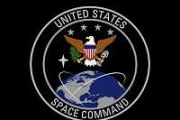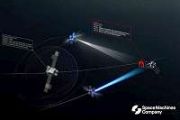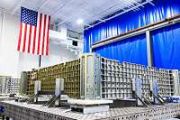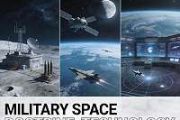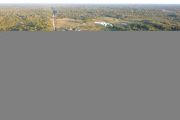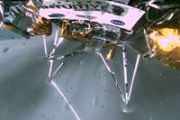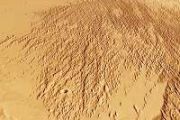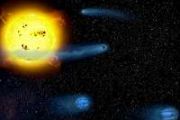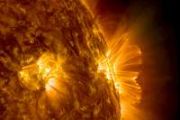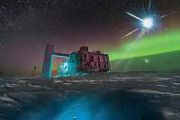
Copernical Team
NASA Supplier Completes Manufacturing Artemis III SLS Booster Motors
 The 10 Space Launch System (SLS) rocket motor segments that will help launch the Artemis III crew on their mission to land on the Moon are complete. Teams finished manufacturing the segments for the mission on May 18, 2022.
Each of the twin solid rocket boosters is made up of five motor segments that will be stacked with the rest of the booster parts before flight. The twin boosters supply
The 10 Space Launch System (SLS) rocket motor segments that will help launch the Artemis III crew on their mission to land on the Moon are complete. Teams finished manufacturing the segments for the mission on May 18, 2022.
Each of the twin solid rocket boosters is made up of five motor segments that will be stacked with the rest of the booster parts before flight. The twin boosters supply SpaceX launches Nilesat 301 satellite, recovers Falcon 9 first stage
 SpaceX on Wednesday launched a communications satellite and recovered its Falcon 9 rocket at sea.
Falcon 9 lifted off from Cape Canaveral Space Force Station in Florida, carrying a Nilesat 301 satellite at 5:04 p.m. on Wednesday.
The rocket's first stage booster returned to earth about 8 minutes and 45 seconds after launch and touched down on SpaceX's Just Read the Instructions d
SpaceX on Wednesday launched a communications satellite and recovered its Falcon 9 rocket at sea.
Falcon 9 lifted off from Cape Canaveral Space Force Station in Florida, carrying a Nilesat 301 satellite at 5:04 p.m. on Wednesday.
The rocket's first stage booster returned to earth about 8 minutes and 45 seconds after launch and touched down on SpaceX's Just Read the Instructions d NASA's Lucy Mission Continues Solar Array Deployment Process
 NASA's Lucy mission team is in the midst of a multi-stage effort to further deploy the spacecraft's unlatched solar array. On May 9, the team commanded the spacecraft to operate the array's deployment motor using both the primary and back-up motor windings simultaneously to generate more torque, i.e. a harder pull.
The motor operated as expected, further reeling in the lanyard that pulls t
NASA's Lucy mission team is in the midst of a multi-stage effort to further deploy the spacecraft's unlatched solar array. On May 9, the team commanded the spacecraft to operate the array's deployment motor using both the primary and back-up motor windings simultaneously to generate more torque, i.e. a harder pull.
The motor operated as expected, further reeling in the lanyard that pulls t Webb: Engineered to Endure Micrometeoroid Impacts
 Micrometeoroid strikes are an unavoidable aspect of operating any spacecraft, which routinely sustain many impacts over the course of long and productive science missions in space. Between May 23 and 25, NASA's James Webb Space Telescope sustained an impact to one of its primary mirror segments. After initial assessments, the team found the telescope is still performing at a level that exceeds a
Micrometeoroid strikes are an unavoidable aspect of operating any spacecraft, which routinely sustain many impacts over the course of long and productive science missions in space. Between May 23 and 25, NASA's James Webb Space Telescope sustained an impact to one of its primary mirror segments. After initial assessments, the team found the telescope is still performing at a level that exceeds a NASA Marshall Team Delivers Tiny, Powerful 'Lunar Flashlight' Propulsion System
 Engineers at NASA's Marshall Space Flight Center in Huntsville, Alabama, have built some of the largest rocket engines ever to light up the icy reaches of space. Now Marshall and its commercial partners have delivered one of the smallest propulsion systems in its history, designed to help propel an upcoming NASA mission to shed new light on the Moon's South Pole - in search of a much more useful
Engineers at NASA's Marshall Space Flight Center in Huntsville, Alabama, have built some of the largest rocket engines ever to light up the icy reaches of space. Now Marshall and its commercial partners have delivered one of the smallest propulsion systems in its history, designed to help propel an upcoming NASA mission to shed new light on the Moon's South Pole - in search of a much more useful Iris system to digitalise airspace goes global
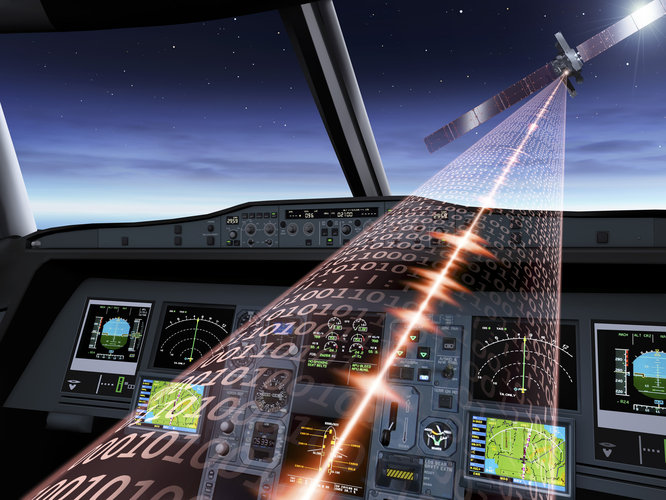
A space-enabled system to help clear congested skies while reducing carbon emissions is going global, following a deal signed today between satellite communications provider Inmarsat and ESA.
NASA's Webb telescope: Engineered to endure micrometeoroid impacts
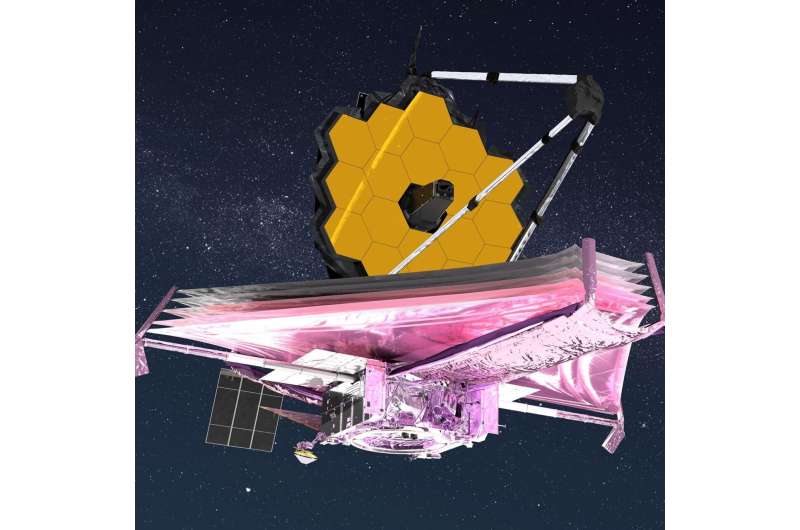
Micrometeoroid strikes are an unavoidable aspect of operating any spacecraft, which routinely sustain many impacts over the course of long and productive science missions in space. Between May 23 and 25, NASA's James Webb Space Telescope sustained an impact to one of its primary mirror segments. After initial assessments, the team found the telescope is still performing at a level that exceeds all mission requirements despite a marginally detectable effect in the data.
Thorough analysis and measurements are ongoing. Impacts will continue to occur throughout the entirety of Webb's lifetime in space; such events were anticipated when building and testing the mirror on the ground. After a successful launch, deployment, and telescope alignment, Webb's beginning-of-life performance is still well above expectations, and the observatory is fully capable of performing the science it was designed to achieve.
Webb's mirror was engineered to withstand bombardment from the micrometeoroid environment at its orbit around sun-Earth L2 of dust-sized particles flying at extreme velocities.
Maritime Satcom Connectivity on the Uptick in Nordic Region
 The small island of Donso is renowned as a historic fishing village, where even today boathouses at the harbour honour its rich maritime heritage with name plaques of fishing vessels. It forms the perfect backdrop for Sweden's biggest all-inclusive trade fair - Donso Shipping Meet, taking place on June 14th and 15th this year. In the lead up to this event, IEC Telecom Norway, one of the leading
The small island of Donso is renowned as a historic fishing village, where even today boathouses at the harbour honour its rich maritime heritage with name plaques of fishing vessels. It forms the perfect backdrop for Sweden's biggest all-inclusive trade fair - Donso Shipping Meet, taking place on June 14th and 15th this year. In the lead up to this event, IEC Telecom Norway, one of the leading Lynred launches two multispectral linear array infrared detectors for EO missions
 Lynred, a leading global provider of high-quality infrared (IR) detectors for the aerospace, defense and commercial markets, today announces the launch of two multispectral linear array IR detectors for application in a range of Earth observation missions. Pega and Capyork are designed for integration into imaging satellites, tracking and measurement instruments used in water cycle observation a
Lynred, a leading global provider of high-quality infrared (IR) detectors for the aerospace, defense and commercial markets, today announces the launch of two multispectral linear array IR detectors for application in a range of Earth observation missions. Pega and Capyork are designed for integration into imaging satellites, tracking and measurement instruments used in water cycle observation a The end of the cosmic dawn
 A group of astronomers led by Sarah Bosman from the Max Planck Institute for Astronomy have robustly timed the end of the epoch of reionisation of the neutral hydrogen gas to about 1.1 billion years after the Big Bang. Reionisation began when the first generation of stars formed after the cosmic "dark ages", a long period when neutral gas alone filled the Universe without any sources of light. T
A group of astronomers led by Sarah Bosman from the Max Planck Institute for Astronomy have robustly timed the end of the epoch of reionisation of the neutral hydrogen gas to about 1.1 billion years after the Big Bang. Reionisation began when the first generation of stars formed after the cosmic "dark ages", a long period when neutral gas alone filled the Universe without any sources of light. T 




